- A recent report reveals communities in Brazil’s Mato Grosso region are contaminated by the agriculture industry’s increasing use of pesticides. About 88% of the plants collected, including medicinal herbs and fruits, on Indigenous lands have pesticide residue.
- Samples discovered high levels of pesticides in ecosystems and waters far from crop fields, including carbofuran — a highly toxic substance which is banned in Brazil, Europe and the U.S.
- Experts blame the lack of control by government officials for widespread environmental damage and an escalating health crisis among Indigenous populations, as communities report growing numbers of respiratory problems, acute poisonings and cancers.
- A spokesperson for the biggest agrochemical companies operating in Brazil disputes the findings of the report and numbers of people far from crop regions affected by pesticide usage.
Brazil’s use of pesticides has spiked in recent years, growing by over 300,000 tonnes since 2010, according to experts.
A recent report, published by the NGO Operação Amazônia Nativa (OPAN) in partnership with the Federal University of Mato Grosso’s institute of public health, reveals the harmful effects of these chemicals on Indigenous populations living in Mato Grosso, the region with the highest pesticide concentrations in the country.
According to its findings, each inhabitant of Mato Grosso is estimated to have been exposed to 65.8 liters of pesticides—some of these substances banned—in 2018. The situation is worse for people living in the state’s rural cities where exposure is estimated to exceed 300 liters per inhabitant each year.

Mato Grosso is a high-producing agricultural region in the country and the leading producer of cotton among all Brazilian states. Cotton is the crop that uses the most pesticides in the state and is the second-largest pesticide-using crop in the country.
Mato Grosso lies at the intersection of the Amazon rainforest, the Cerrado tropical savannah and the Pantanal wetlands—areas of great importance for global climate stabilization.
To assess the impact of the agriculture sector in the region, samples were taken from plants, trees and water on Indigenous lands for laboratory analysis. The study discovered pesticide residues in 88% of the plants collected, including medicinal herbs and fruits.
Pesticides, which are usually applied to fields using spray nozzles, can travel long distances by wind, often onto neighboring land. This phenomenon, known as pesticide drift, is responsible for contamination outside agricultural fields, sometimes over 1,000 kilometers (about 621 miles) from spray zones.
One of the substances found in the samples was carbofuran which has been banned in Brazil since 2017 and for more than 50 years in Europe and the US. This chemical can be fatal if ingested or inhaled, resulting in fetal malformations and severe damage to the neurological, respiratory, and endocrine systems.

“These problems are very worrying for us,” Edna Zolozoiqueimairo, an Indigenous member of the Tirecatinga Indigenous territory, told Mongabay. The people in her village are in serious trouble, she says, as the rivers they rely on for drinking, cooking and bathing are polluted.
When questioned about the use of banned chemicals, a government spokesperson at Impresna, Brazil’s national press office, told Mongabay, that “as a country with a tropical climate, Brazil has different characteristics from European countries, thus it is necessary to consider different control solutions as well.”
In response to the report, CropLife Brazil, an association that represents the largest pesticide-producing companies doing business in Brazil, such as BASF, Bayer, Corteva, FMC and Syngenta, disputes the findings on exposure to pesticides and that the drift travelled over hundreds of kilometers from crop regions.
Pesticide contamination is a major environmental and health concern in Brazil, particularly among Indigenous communities, given the country’s use of approximately one-fifth of pesticides produced worldwide. According to data published by IBAMA, the Brazilian Institute for the Environment and Renewable Natural Resources, Brazil consumes more than 500 thousand tons of these substances a year.

Read more: For European chemical giants, Brazil is an open market for toxic pesticides banned at home
Cotton, with a health cost
Research shows that one person dies every two and half days from direct intoxication from agricultural chemicals with alarming incidences among the youngest of the Brazilian population.
The expansion of large-scale cotton production in Mato Grosso, including of soy, corn, sunflower and sugarcane, comes with a dire health cost for Indigenous communities who are surrounded by cotton plantations. In the last ten years, cancer rates among these populations have increased by 137%.
Cotton is the crop that uses the most pesticides in the state. On average, 28.86 liters of pesticides are used per hectare (2.47 acres). It is the second-largest pesticide-using crop in Brazil, second only to tobacco, which uses an average of 60 liters per hectare.
The Tirecatinga territory in the municipality of Sapezal, for instance, has one of the highest pesticide concentrations in the country. All plants and vegetation close to the fields are affected by pesticides. There are reports of a reduction in the flowering of trees, such as pequi (a sweet, cheesy fruit in Brazil) and mango, which are widely used by Indigenous people in their food, as well as a reduction in bees and honey production.

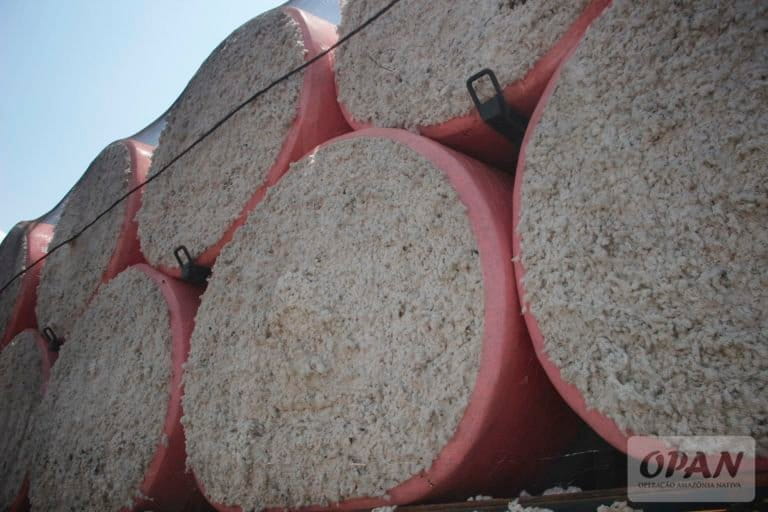
In the first quarter of 2019, after President Jair Bolsonaro’s government approved over 150 new pesticides, the use of neonicotinoids caused the death of more than 500 million bees across the country.
A spokesperson from the Brazilian Network of Plant-Pollinator Interactions (REBIPP) told Mongabay that 76% of the plants cultivated in Brazil depend on pollinators to produce fruits and seeds – “the decline in bee populations compromises the pollination of cultivated plants and, consequentially, food production.”
The world’s biggest agrochemical companies — Syngenta Group, Bayer, Corteva and BASF — control around 70% of the global pesticide market.
In 2018, Syngenta’s best-selling highly hazardous pesticide was thiamethoxam – an insecticide banned in the EU because it is highly toxic to bees. Residues of this substance were also found on plants inside Tirecatinga Indigenous lands.
Márcia Leopoldina Montanari Corrêa, professor at the Institute of Collective Health at UFMT and coordinator of the new report, told Mongabay acute poisoning is one of the many dangers of the cotton production chain to human health.
“Many of these communities use water from the river without any type of treatment and report that they smell and taste contamination during times of intense spraying,” said Corrêa.
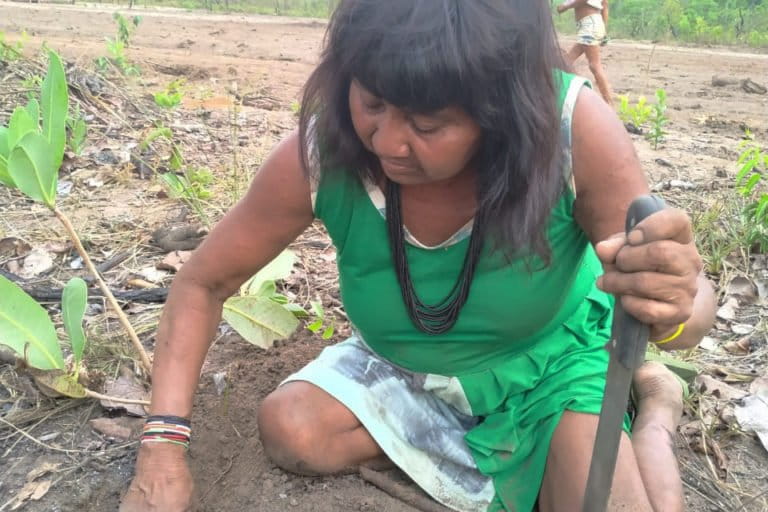
Chronic diseases, such as cancer, congenital malformations, neurological and psychiatric diseases and diseases of the endocrine system, are other major side effects of pesticide poisoning, Corrêa elaborated.
Many poisonings go unreported in Brazil’s Health Information System (HIS) because of unequipped health surveillance teams, the intervention of agribusiness managers and the low demand for treatment from poisoned individuals who fear reprisals and consequent loss of employment.
Research comparing the number of acute poisonings self-reported by individuals against those reported on Brazil’s Notifiable Diseases Information System (SINAN) estimates that for every reported case of pesticide poisoning in Mato Grosso, 26 will go unrecorded. Worse still, in Sapezal – a municipality in Mato Grosso with the highest pesticide concentrations in the country – 100% of cases are unreported.
Cleide Adriana da Silva Terena, Tirecatinga native and president of Thutakinasu, the Tirecatinga women’s association, told Mongabay that pesticides have been a problem in her community for over three years.
“We are not taking any precautions because we have little understanding of how to deal with the issue,” she said.
Zolozoiqueimairo said many containers previously filled with pesticides often end up in rivers. She recounts a story about a time when people in her village, having little understanding of the dangers of contamination, collected these containers from the water to use in their homes for domestic use.
CropLife Brazil, told Mongabay that “there is a strict regulation regarding the application of pesticides in crop fields,” especially for large-scale producers.

Researchers at FASE, an NGO for the advancement and protection of local communities, argue that farming companies rarely comply with Brazilian regulations regarding safe spraying distances. According to Brazilian law, pesticides can only be sprayed 90 meters (295 feet) away from homes, water sources and roads — a rule that already offers little protection from pesticide drift.
In December 2020, 150 students were referred to an Emergency Care Unit in Sinop after a neighboring farm sprayed pesticides 20 meters from school grounds during class hours. The farm was later fined by Mato Grosso’s Institute of Agricultural Defense (INDEA) – the state body responsible for incidents of this nature.
Farmers using pesticides in the region are at risk too. According to the 2017 Agricultural Census, about 18% of rural producers are women. However, research has shown that, when it comes to acute pesticide poisoning in Brazilian agriculture, mortality among women is higher than estimated among men.
Maria Claudia Peres Moura Luna, a researcher of public and occupational health at the Federal University of Bahia (UFBA) in Brazil, found that 24.9% of women died due to occupational pesticide poisoning, compared to 8.9% of men. The reason for this appears to relate to differences in working conditions.
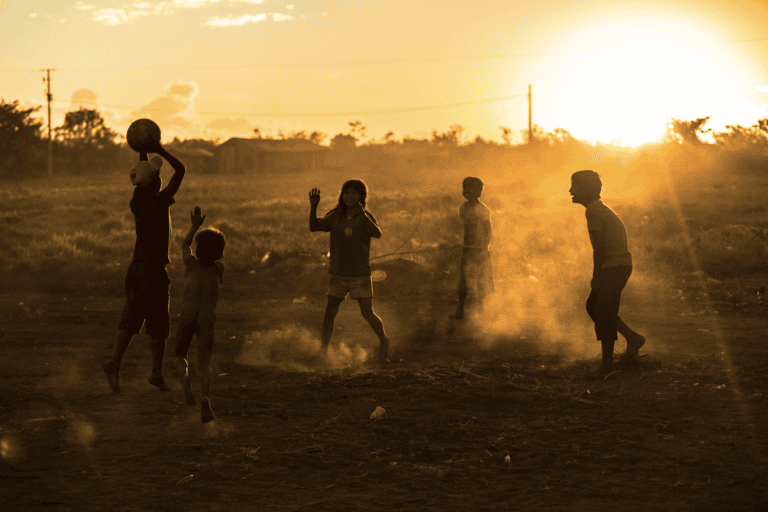
Read more: Mongabay probe key as Brazil court rules on palm oil pesticide contamination
Agribusiness in power
To encourage the growth of the agriculture sector, the Brazilian government grants tax exemptions to large-scale producers. In Sapezal, for example, cotton growers are incentivized by several packages, such as the Kandir Law, which exempts agricultural exports from the ICMS tax in Brazil, and the Cotton Culture Support Fund, which offers subsidies to promote the expansion of cotton in Mato Grosso.
According to research, from 1996 to 2017, these exemptions resulted in $10.8 billion of uncollected State Goods and Services Tax.
“As the state of Mato Grosso is largely devoted to agribusiness and is also managed by businesspeople and industry representatives, there is a certain silence about contamination and the risk to health,” Spolti told Mongabay. “Few people talk about the topic for fear of retaliation at work and even for fear of suffering violence.”
For over 15 years, Larissa Bombardi has collected data on Brazil’s pesticide sector, most of which contradicts the industry’s statements of safe practice and effective regulation. After the publication of her atlas on pesticides in May 2019, she was subject to intimidation and threats and was forced to move to Belgium to protect herself and her two children.
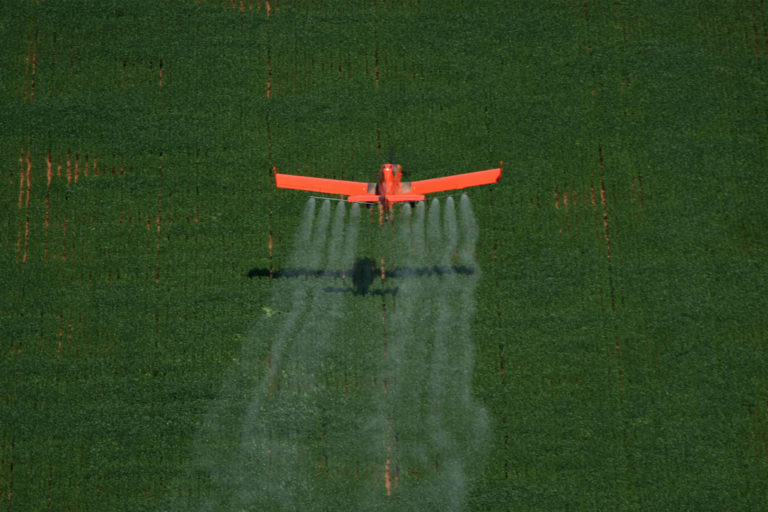
Earlier this year, Brazil’s House of Representatives passed a draft bill (PL 6299/2002) which sets out to weaken regulations governing the use of pesticides in Brazil, exposing communities to greater environmental and human harm.
A trade deal between the EU and Mercosur countries (Argentina, Brazil, Paraguay and Uruguay), which aims to increase trade in agricultural products like meat, soy and pesticides, has also been discussed since 2019. Critics worry the agreement will ramp up deforestation at the expense of the rainforest, the climate and the rights of Indigenous communities.
Environmentalists hope that Brazil’s new president Luiz Inácio Lila da Silva will influence changes to these tax exemptions and bills, and reverse the dismantling of environmental protections that took place during ex-president Jair Bolsonaro’s time in power.
In his victory speech, Lula said he wants fairer trade and is not interested in agreements that condemn Brazil to “the eternal role of the exporter of commodities and raw materials.”
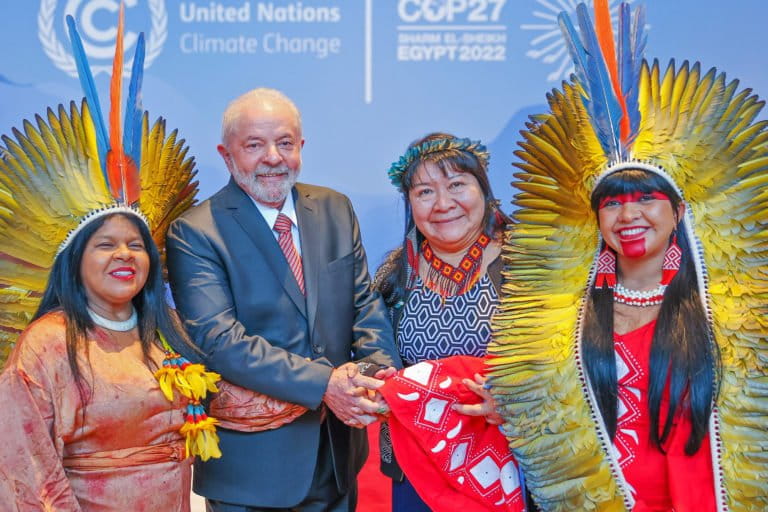
During his first day in office, the new president signed a package of executive orders to rebuild the country’s environmental institutions and signed several decrees, including one which will reestablish Brazil’s environmental sanctioning process – dismantled during Bolsonaro’s presidency – which will ensure fines can no longer be evaded by landowners who commit environmental crimes.
Their plans will likely face resistance from Congress, where Brazil’s farm caucus accounts for more than one-third of the Lower House and Senate.
Francileia Paula de Castro, a representative of the National Campaign Against Pesticides and For Life, believes a National Policy for the Reduction of Pesticides (PNARA) is an important step to protect Indigenous territories near agriculture fields.
“Today, pesticides represent not only a risk to the health of families,” she said. “But are a direct threat to the social reproduction of these communities.”
Read more: Novel chemical entities: Are we sleepwalking through a planetary boundary?
Citations:
Pignati, A. W., Soares, M. R., Lara, S. S., Lima, F. A. N. S., Fava, N. R., Barbosa, R. J., & Corrêa, M. L. M (2022). Exposure to pesticides, health conditions, and popular surveillance of municipalities of Mato Grosso. Saúde Debate, 46(2). doi: https://doi.org/10.1590/0103-11042022E203
Panis, C., Zanetti Pessôa Candiotto, L., Carla Gaboardi, S., Gurzenda, S., Cruz, J., Castro, M., & Lemos, B. (2022). Widespread pesticide contamination of drinking water and impact on cancer risk in Brazil. Environment International, 165. doi: https://doi.org/10.1016/j.envint.2022.107321
Operação Amazônia Nativa (2022). Impacts of cotton monoculture on health and the environment in Mato Grosso. https://amazonianativa.org.br/2022/12/06/impacts-of-cotton-monoculture-on-health-and-the-environment-in-mato-grosso/
Banner image: Man spraying pesticides in woods. Image by Gilmer Diaz Estela via Pexels.
Related listening from Mongabay’s podcast: We discuss a new investigative report by Mongabay’s contributing editor for Brazil, Karla Mendes, that looks at the impacts of the palm oil industry’s growth in the Amazon. Listen here:
Brazil’s pesticide poisoning problem poses global dilemma, say critics
FEEDBACK: Use this form to send a message to the author of this post. If you want to post a public comment, you can do that at the bottom of the page.
